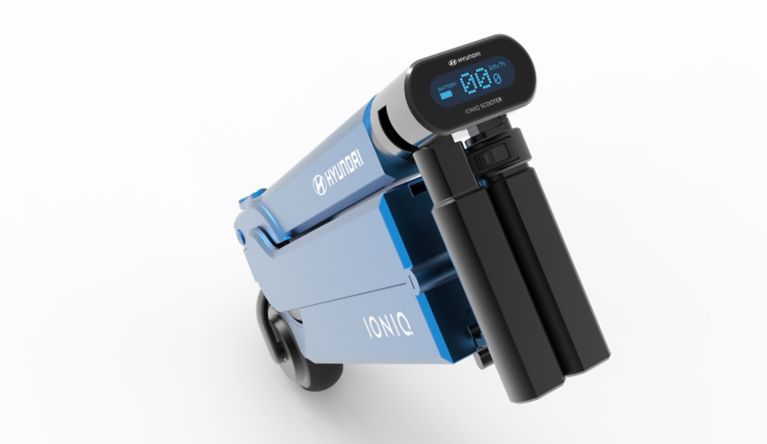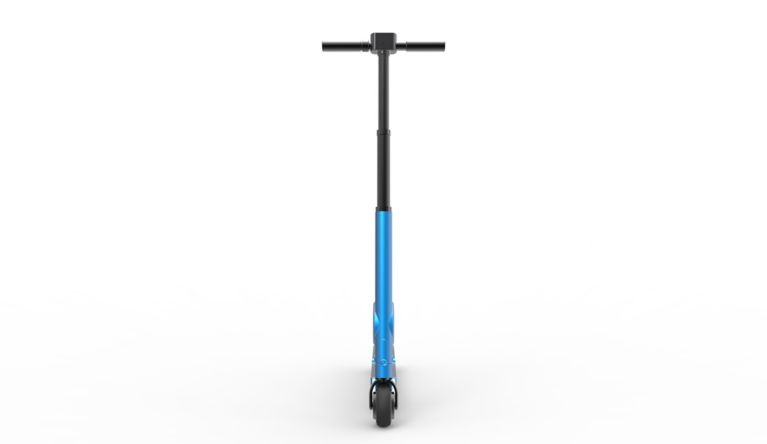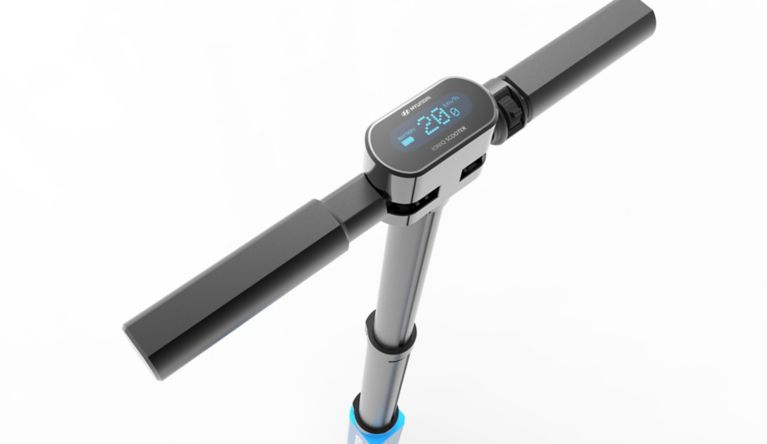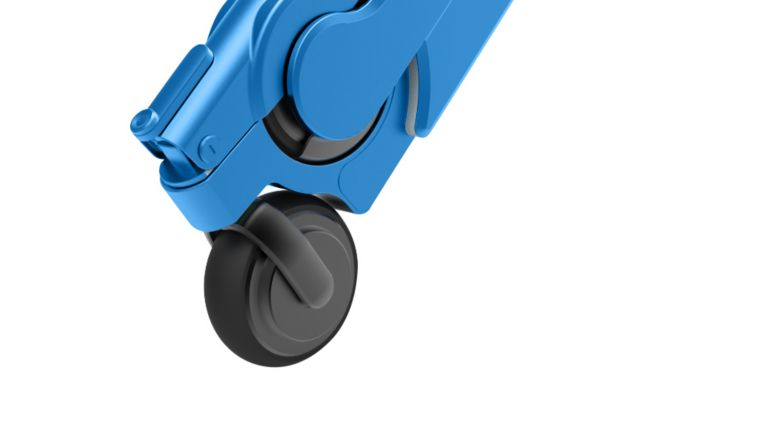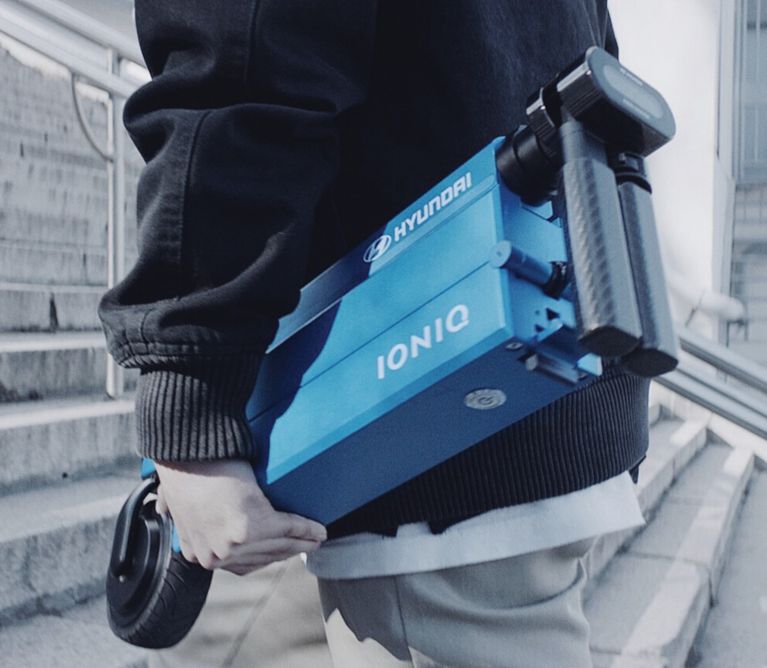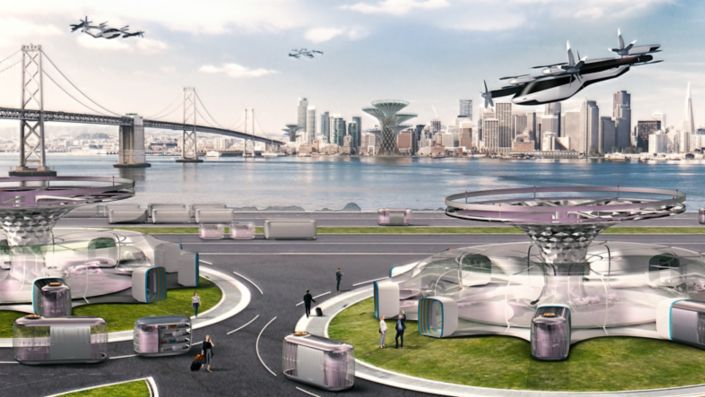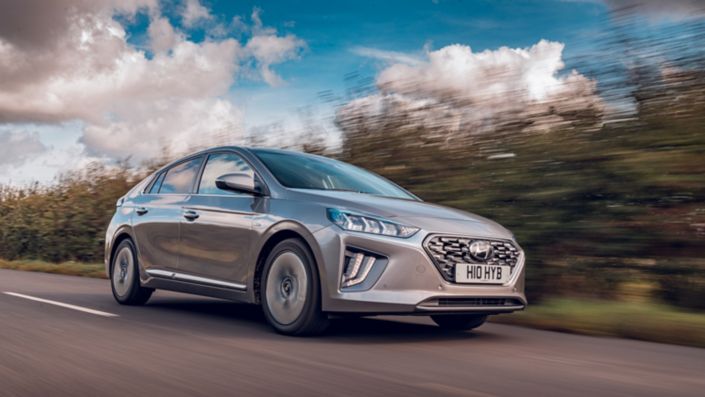- Future-looking Project IONIQ spawns final-mile mobility concept: IONIQ Scooter
- Lightweight, electric Scooter enables Hyundai Motor customers to reach their destination with ease
- Hyundai Motor’s innovative portable-mobility concept unveiled at CES 2017
Press material
-
Download
-
Images
Hyundai Motor has shown its portable-mobility concept – IONIQ Scooter – at the 2017 Consumer Electronics Show (CES) in Las Vegas.
The lightweight, electrically-powered scooter is stored in the front door of the IONIQ Electric and allows customers to continue easily to their final destination.
Enabling drivers to continue their journey after parking or helping them to travel to public transit stations, the IONIQ Scooter is another innovation from Hyundai Motor’s long-term research and development program, Project IONIQ. The compact scooter is charged while it sits conveniently inside the front door of the IONIQ Electric. The accessibility of the scooter is highlighted by the fact it is stored in the IONIQ Electric’s front door rather than the trunk.
Users can fold and unfold the scooter with just one hand, and its lightweight construction enhances its portability. The scooter is equipped with front and rear lights to aid visibility, and an occupant sensor detects when the rider is safely aboard before riding mode is enabled. Acceleration is controlled by the rider scrolling up their thumb switch, while braking is achieved by pressing a pad over the scooter’s rear wheel or scrolling down thumb switch.
Compact and convenient last mile transportation
Enabling drivers to continue their journey after parking or helping them to travel to public transit stations, the IONIQ Scooter is another innovation from Hyundai Motor’s long-term research and development program, Project IONIQ. The compact scooter is charged while it sits conveniently inside the front door of the IONIQ Electric. The accessibility of the scooter is highlighted by the fact it is stored in the IONIQ Electric’s front door rather than the trunk.
Users can fold and unfold the scooter with just one hand, and its lightweight construction enhances its portability. The scooter is equipped with front and rear lights to aid visibility, and an occupant sensor detects when the rider is safely aboard before riding mode is enabled. Acceleration is controlled by the rider scrolling up their thumb switch, while braking is achieved by pressing a pad over the scooter’s rear wheel or scrolling down thumb switch.
Hyundai Motor takes pride in finding innovative solutions to make the lives of our customers as easy as possible, so developing concepts like the IONIQ Scooter is at the core of our forward-looking R&D program, Project IONIQ. As we look ahead, our vision is to be a world leader in hyper-connected living and to offer our customers seamless, end-to-end transport solutions.
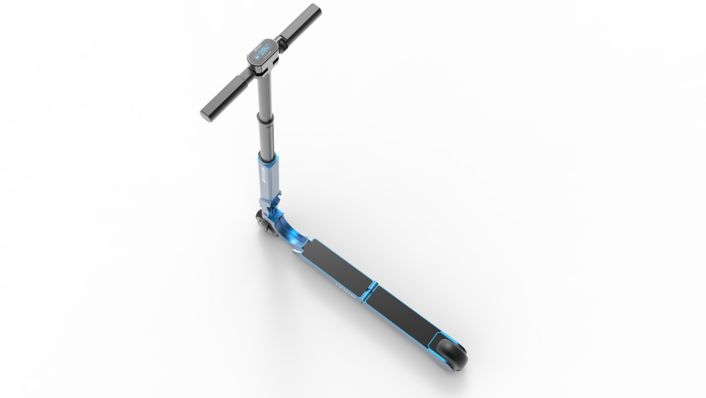
Project IONIQ – innovating the future
Working to redefine future mobility through innovation, Project IONIQ is a long-term research and development project that will enhance the lives of Hyundai Motor customers.
Through Project IONIQ, Hyundai Motor strives to deliver ‘freedom in mobility’ through four key directions - freedom to effortlessly access mobility whenever and wherever; freedom to connect everyday life while on the move; freedom from accidents and inconveniences; and freedom from environmental pollution and energy exhaustion.
Project IONIQ focuses on three main areas of research, aiming to advance theoretical and practical understanding of future customer requirements. This includes predicting changes in future mobility and studying possible scenarios; developing new types of mobility according to changes in society and people’s lifestyles; and creating new service models and mobility experiences that extend the role and definition of ‘cars’.
The first step of Project IONIQ saw Hyundai Motor introduce the new alternative-fuel IONIQ model, the world’s first car to offer a choice of three electrified powertrains. In the coming years, Hyundai Motor will develop a wealth of innovations through Project IONIQ, each of which takes an innovative approach to future mobility.
The Hyundai Motor booth at CES presents the company’s vision for future mobility, combining an immersive virtual reality experience with working prototypes that enable easier, more enjoyable and hyper-connected living. Hyundai Motor also presents a working connected car concept and a virtual reality autonomous driving simulator to demonstrate how its connected platforms operate.
